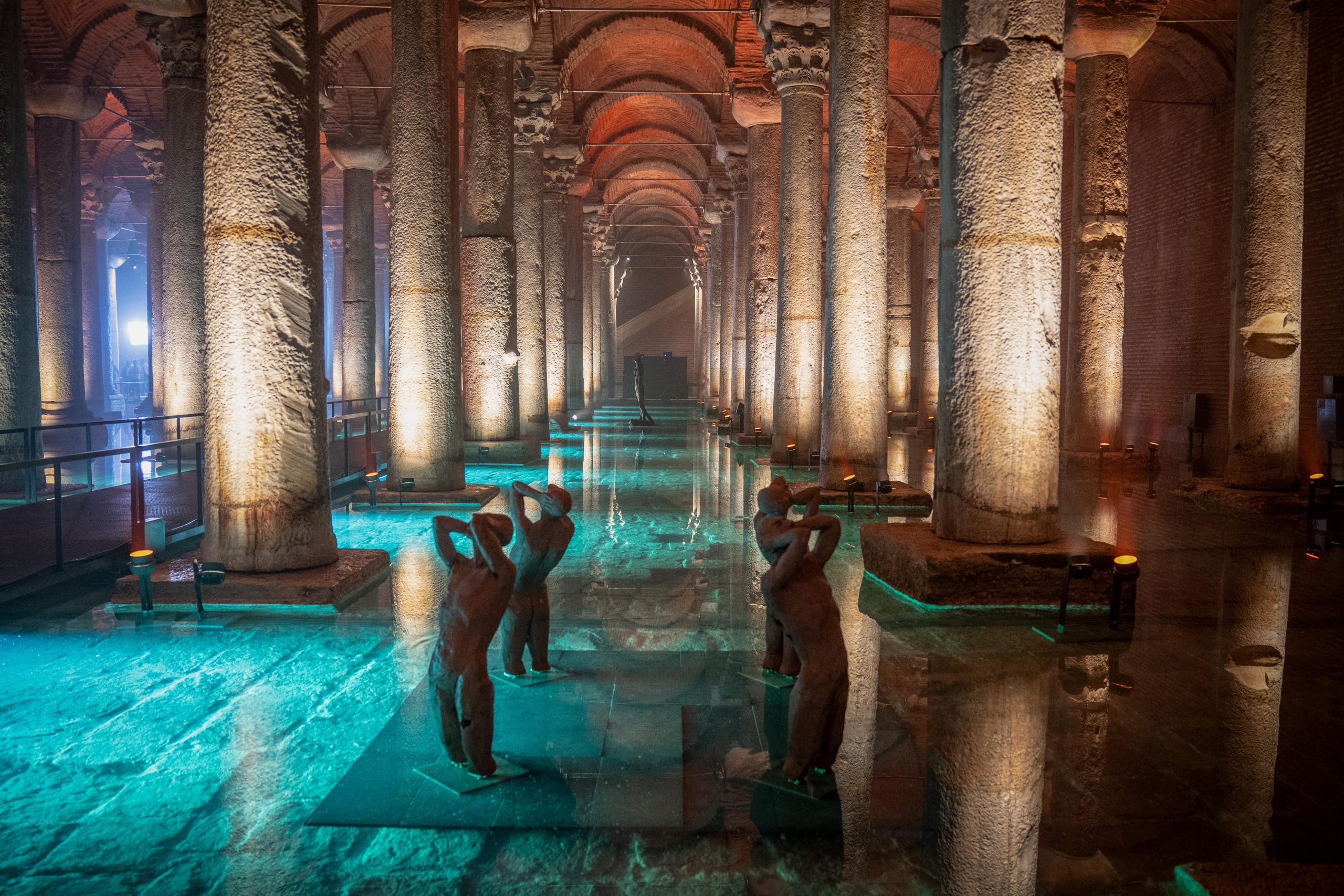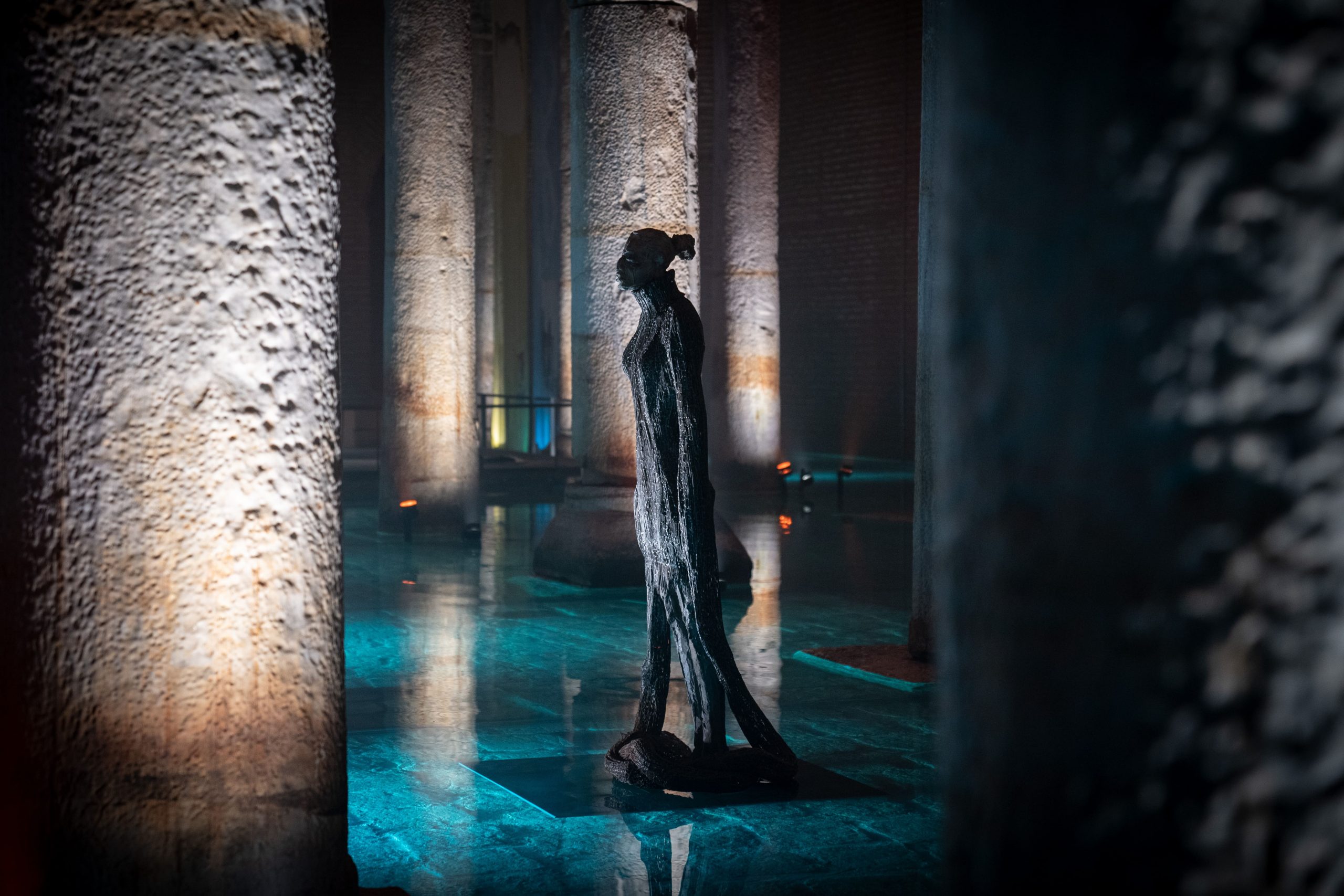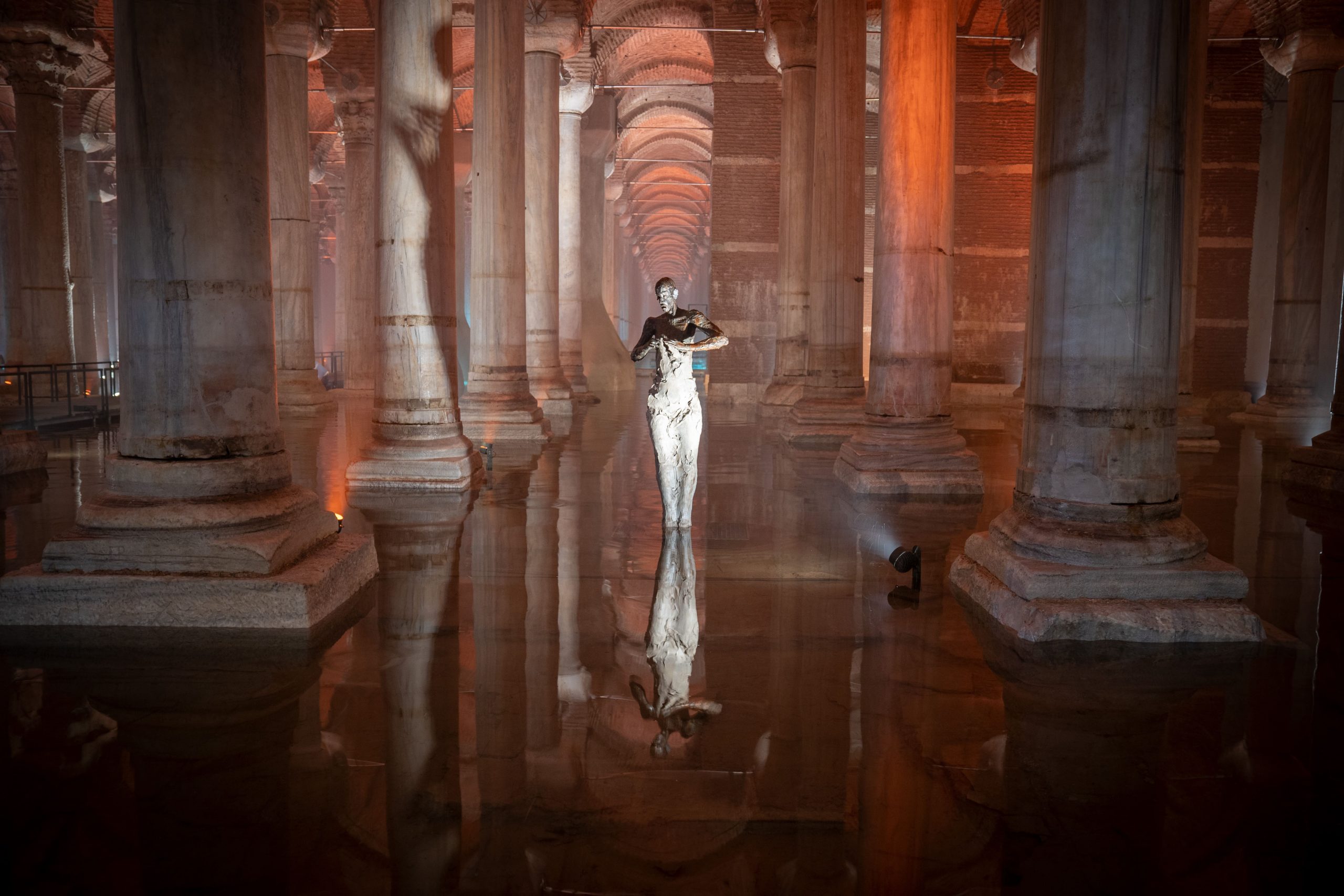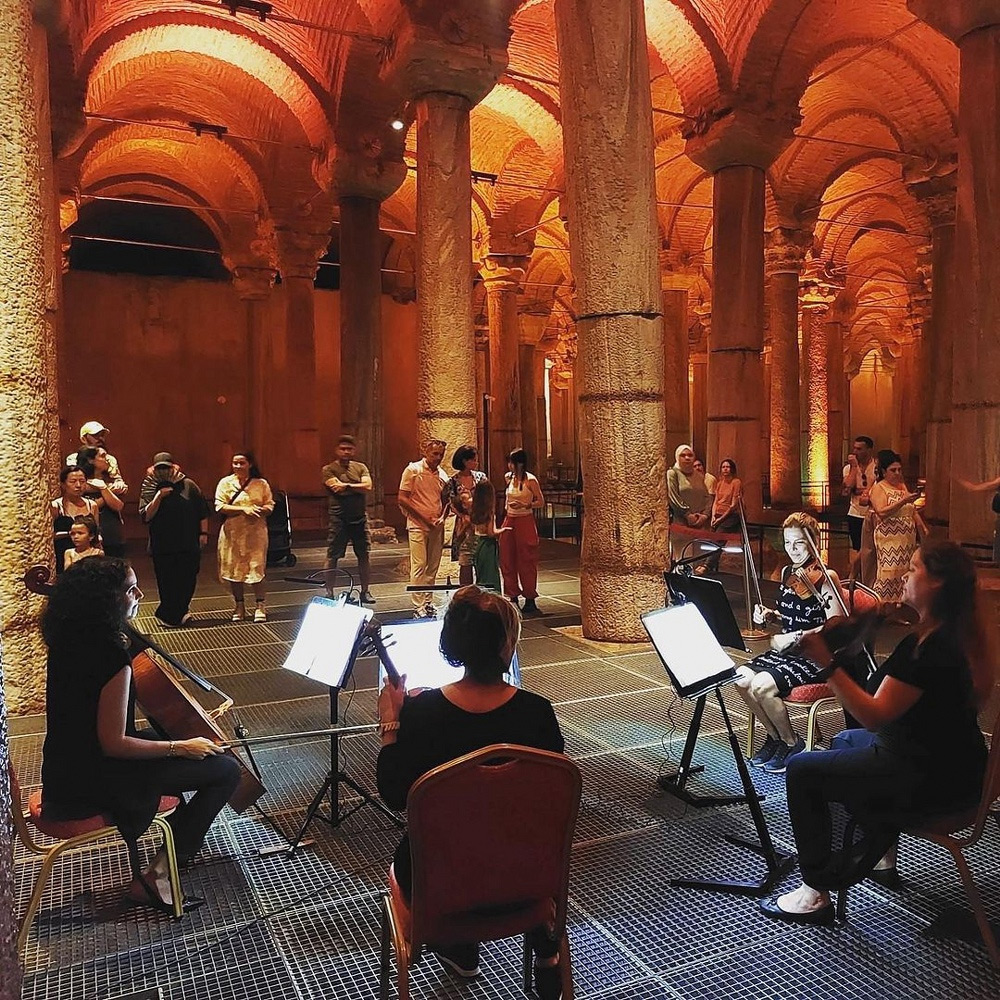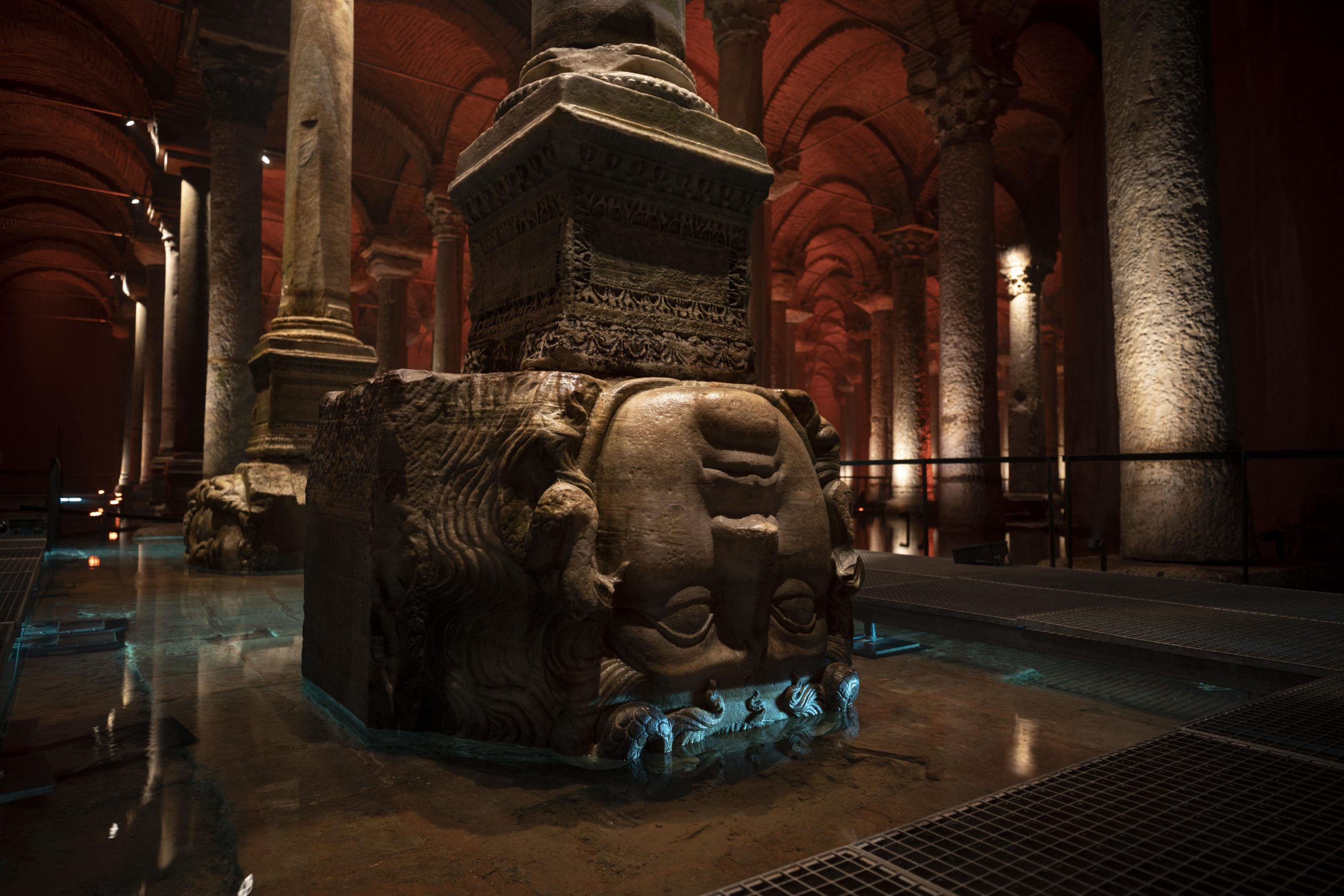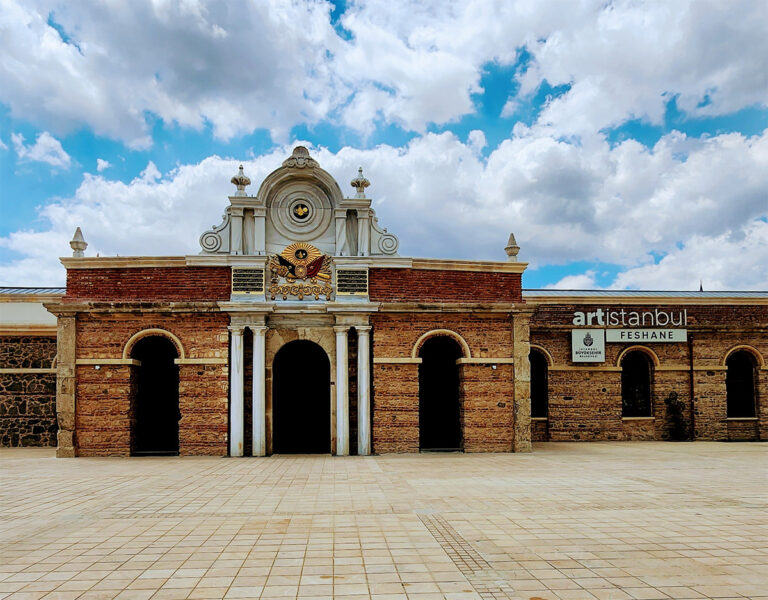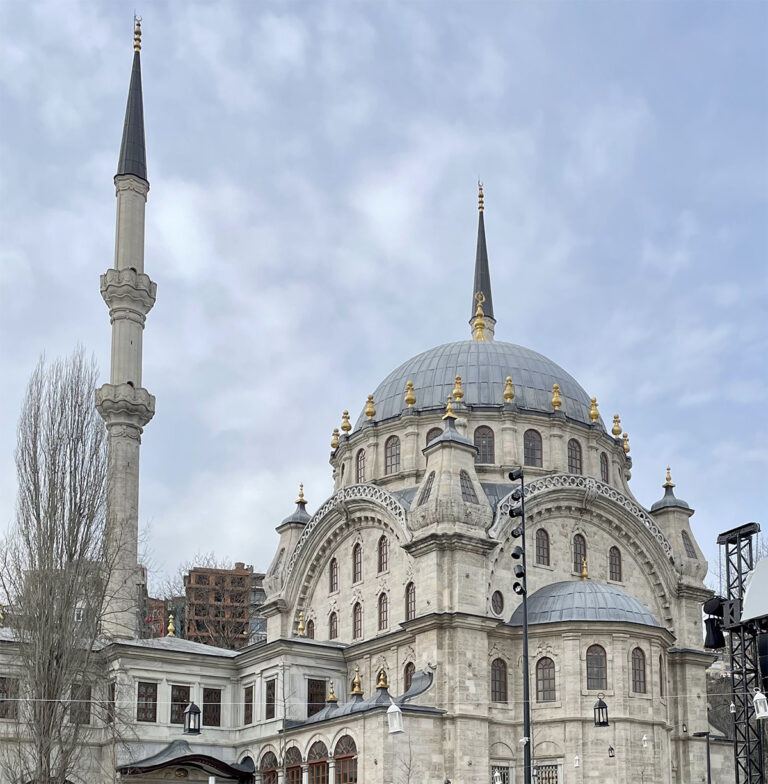Basilica Cistern (Yerebatan Cistern Museum) History, Exhibits, Entrance Fee, and Visiting Hours
Yerebatan Sarnıcı Müzesi, also known as the Basilica Cistern, is one of Istanbul’s most significant cultural heritage sites. Built by the Byzantine Emperor Justinian I between 527 and 565 AD, this massive underground cistern is commonly known as the “Yerebatan Palace” due to its numerous marble columns rising from the water. It’s also referred to as the “Basilica Cistern” because of the Stoa Basilica that once stood in its place.
Covering an area of approximately 10,000 square meters, with dimensions of 140 meters in length and 70 meters in width, the cistern is the largest of Istanbul’s ancient cisterns. It has a water storage capacity of 80,000 cubic meters and is notable for its many reused structural elements.
The cistern contains 336 columns, each 9 meters high, arranged in 12 rows of 28 columns, set 4.80 meters apart. Most of these columns are carved from various types of marble, and while the majority are monolithic, some are composed of two pieces.
The column capitals are diverse; some reflect the Corinthian style, while others are unadorned. Most columns are cylindrical, except for a few that are angular or fluted.
The walls of the cistern, constructed from brick and measuring 4.80 meters in thickness, along with the brick-paved floor, have been plastered with a thick layer of Khorasan mortar to make them waterproof.
After the conquest of Istanbul in 1453, the cistern continued to supply water to Topkapı Palace for a while and was later used by the local populace as the area began to be inhabited.
The cistern remained relatively unnoticed by Westerners until the mid-16th century when it was “rediscovered” by Petrus Gyllius, a French naturalist and topographer who lived in Istanbul between 1544 and 1555. Gyllius, who first measured the dimensions of the cistern, noted its 336 columns and several wells on its top, suggesting that locals were aware of the cistern and used it for drawing water, fishing, and even boating.
The cistern underwent renovations during the reigns of Ottoman Sultans Ahmed III and Abdulhamid II. Between 1955 and 1960, nine columns at risk of collapse were encased in thick concrete. Comprehensive restoration and cleaning works were conducted by the Istanbul Metropolitan Municipality between 1985 and 1987, during which the famous Medusa head column bases were discovered. These Roman sculptures, one placed upside down and the other sideways, have become a focal point for visitors and have been the subject of various legends.
After its restoration, the cistern was opened to the public as a museum in 1987 and has since hosted numerous national and international events.
Contact Information:
- Phone: +90 (212) 222 28 82
- Email: [email protected]
- Address: Yerebatan Cad. Alemdar Mah. 1/3, 34410 Sultanahmet-Fatih, Istanbul
Night Shift Events at Yerebatan Sarnıcı: Yerebatan Sarnıcı also hosts “Night Shift” events, featuring surprise concerts, thematic exhibitions, and various cultural activities, merging history and art in a unique setting. Visitors can experience the cistern’s mystical ambiance during these special events. For current event information, you can visit their website.
Past Events Include:
- “Derinden Gelen Sesler” concert series featuring music from different eras and cultures.
- “Bazilikanın Karanlığı,” an event that explores light, scent, and space perception.
- “Lâl Hayal,” a one-woman play by Songül Öden.
- “GEBE,” a performance examining motherhood and womanhood.
